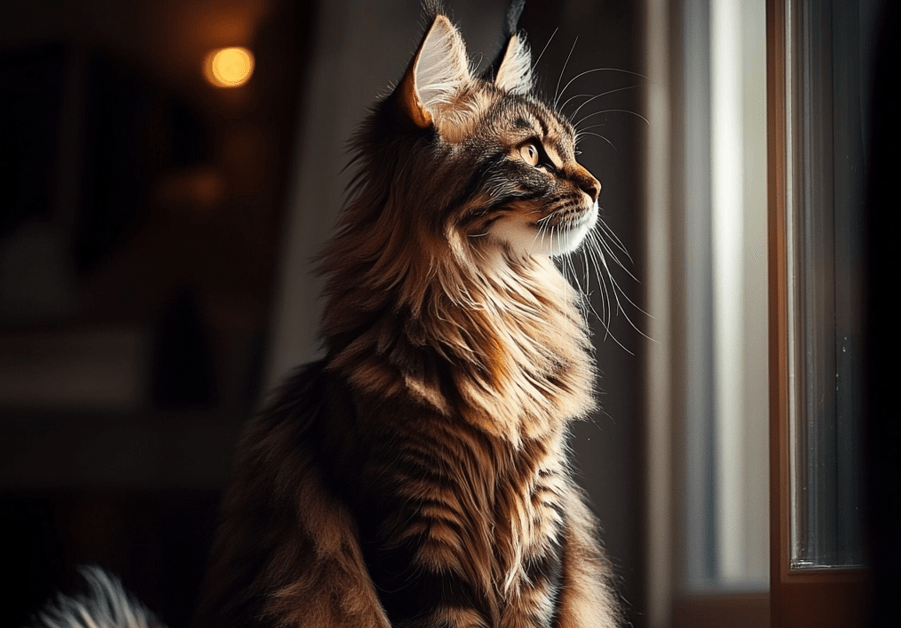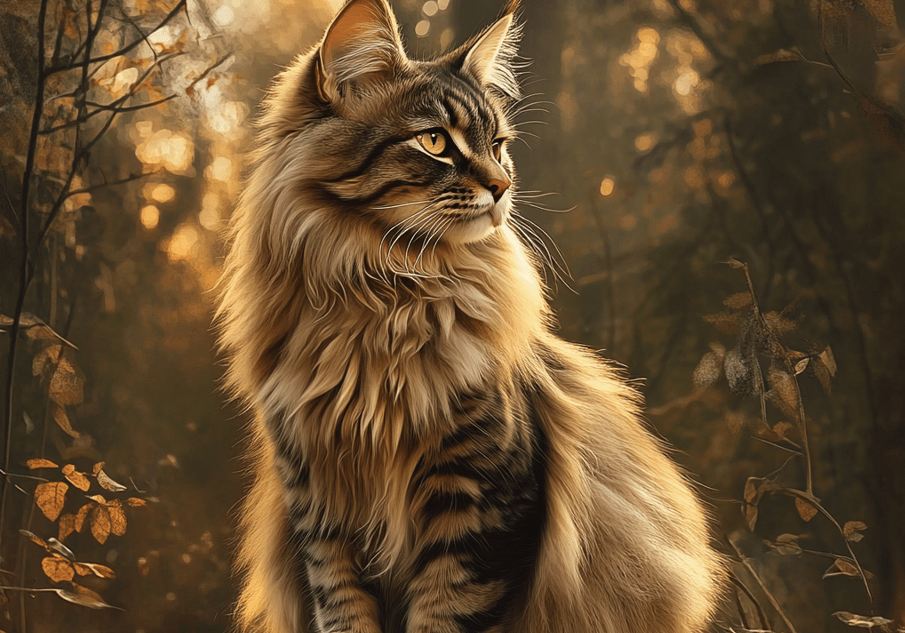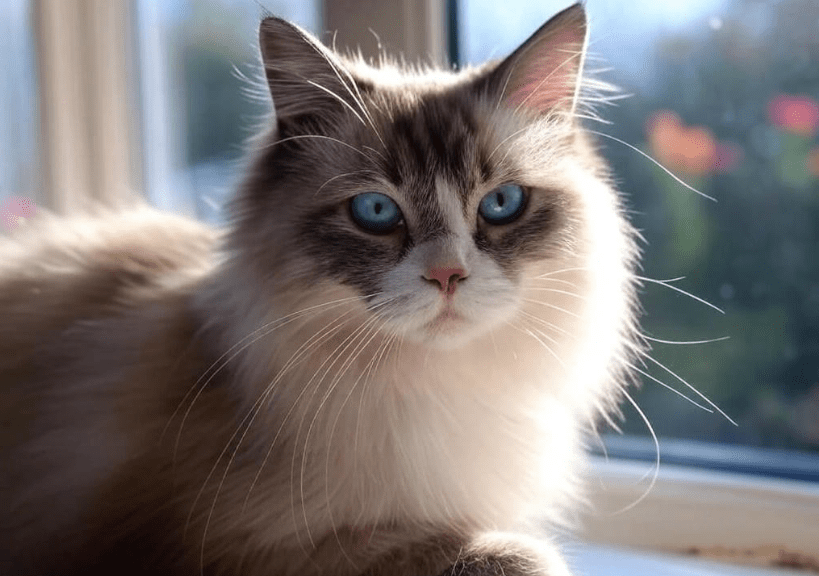
Maine Coon cats are renowned for their striking appearance, gentle temperament, and, perhaps most notably, their unique vocalizations. Unlike the typical meows of other breeds, Maine Coons are famous for their chirps, trills, and chatty nature, often engaging their owners in what feels like a full-blown conversation. If you’ve ever wondered, “Why is my Maine Coon so vocal?” you’re not alone. This article dives deep into the reasons behind the Maine Coon’s vocal chirps and trills, offering insights into their communication style and how to interpret it.
With their dog-like personalities and expressive vocal repertoire, Maine Coons use sounds to connect with their environment and humans. This comprehensive guide explores the science, behavior, and personality behind their vocalizations, providing practical tips for owners to understand and respond to their talkative feline friends. Whether you’re a new Maine Coon owner or a seasoned enthusiast, this article will help you decode your cat’s chirps and trills, making your bond even stronger.
The Maine Coon’s Unique Vocalizations
Maine Coon cats are often described as the “singers” of the feline world. Instead of the standard meow, they produce a range of sounds, including:
Chirps: Short, high-pitched sounds resembling a bird’s chirp.
Trills: A rolling, melodic sound that combines a meow and a purr.
Chatter: Rapid, staccato sounds often made when watching birds or prey.
Yowls: Louder, more intense vocalizations, typically used to express discomfort or demand attention.
Purrs: Deep, resonant purrs that convey contentment or affection.
These vocalizations are distinct from other breeds, making Maine Coons stand out as particularly communicative. Their sounds are often soft and musical, reflecting their gentle and sociable nature. Understanding why Maine Coons are so vocal requires exploring their history, personality, and biology.
Why Are Maine Coons So Vocal?
There are several reasons why Maine Coons are more talkative than other cat breeds. Their vocal chirps and trills serve as a primary means of communication, shaped by their genetics, environment, and social bonds. Below are the key factors contributing to their chatty nature:
1. Breed History and Instincts
Maine Coons are one of the oldest natural breeds in North America, with origins traced to the rugged landscapes of Maine. Their ancestors likely developed vocalizations to communicate in the wild, whether to coordinate with other cats, signal territory, or attract mates. The chirps and trills we hear today may be remnants of these survival-driven sounds, adapted for domestic life.
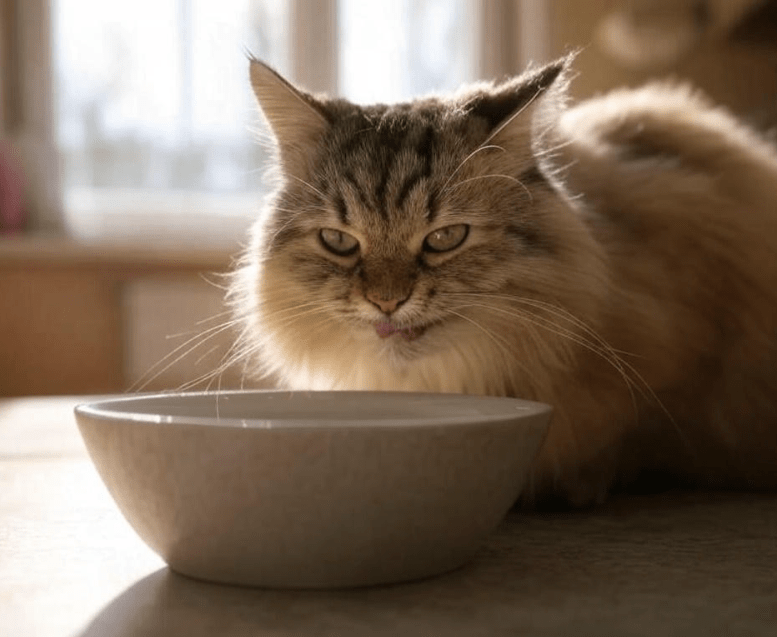
Their hunting instincts also play a role. Maine Coons are skilled hunters, and their chatter—often heard when they spot birds or squirrels through a window—mimics the sounds of prey or expresses excitement. This vocal behavior is a natural extension of their predatory instincts.
2. Social and Affectionate Personality
Maine Coons are often called “gentle giants” due to their large size and friendly demeanor. They thrive on interaction with humans and other pets, using vocalizations to engage and bond. Unlike more aloof breeds, Maine Coons actively seek out companionship, and their chirps and trills are a way to “talk” to their owners.
For example, a Maine Coon might trill to greet you when you come home, chirp to get your attention, or carry on a “conversation” while you prepare their food. This social nature makes them one of the most communicative cat breeds, and their vocalizations are a key part of their charm.
3. Individual Personality and Environment
Each Maine Coon has a unique personality, and some are naturally more vocal than others. Factors like upbringing, socialization, and environment can influence how talkative a Maine Coon becomes. For instance:
Early Socialization: Kittens exposed to humans and other animals early in life may develop a more expressive vocal repertoire.
Stimulation: Maine Coons in enriched environments with toys, climbing structures, and interaction tend to vocalize more to express excitement or curiosity.
Owner Interaction: Cats that receive frequent attention from their owners often become more vocal, as they learn that chirping or trilling gets a response.
4. Communication Needs
Maine Coons use their vocalizations to convey a wide range of emotions and needs, including:
Hunger: A persistent chirp or trill may signal that it’s mealtime.
Attention: Many Maine Coons vocalize to initiate play or petting.
Affection: Trills and soft chirps are often signs of love and trust.
Discomfort: Yowls or louder vocalizations may indicate pain, stress, or illness.
Curiosity: Chirps often accompany exploration or interest in their surroundings.
By paying attention to the context and tone of your Maine Coon’s vocalizations, you can better understand what they’re trying to communicate.
5. Genetic Predisposition
Some experts believe Maine Coons’ vocal tendencies are linked to their genetics. Their large size, robust vocal cords, and unique physiology may allow them to produce a wider range of sounds than smaller breeds. Additionally, selective breeding over generations may have amplified their communicative traits, as owners favored talkative, engaging cats.
Decoding Maine Coon Vocalizations
To truly understand your Maine Coon’s chirps and trills, it’s helpful to interpret them in context. Below is a guide to common vocalizations and their meanings:
|
Vocalization |
Description |
Possible Meaning |
|---|---|---|
|
Chirp |
Short, bird-like sound |
Greeting, excitement, or curiosity |
|
Trill |
Rolling, melodic sound |
Affection, happiness, or invitation to play |
|
Chatter |
Rapid, clicking sounds |
Hunting instinct triggered (e.g., watching birds) |
|
Meow |
Standard cat sound, often soft |
Attention-seeking or mild request |
|
Yowl |
Loud, drawn-out sound |
Discomfort, stress, or territorial behavior |
|
Purr |
Deep, rumbling sound |
Contentment, relaxation, or self-soothing |
Tips for Decoding:
Observe Body Language: A chirping cat with a raised tail and relaxed ears is likely happy, while a yowling cat with flattened ears may be stressed.
Note the Context: Vocalizations during feeding time likely relate to hunger, while chattering near a window suggests hunting instincts.
Listen to Pitch and Volume: Soft, high-pitched sounds are usually positive, while loud or low-pitched sounds may indicate distress.
How to Respond to Your Maine Coon’s Vocalizations
Engaging with your Maine Coon’s vocal chirps and trills can strengthen your bond and make them feel understood. Here are practical ways to respond:

1. Acknowledge Their Sounds
Maine Coons love to be heard. When your cat chirps or trills, respond with a gentle voice, petting, or eye contact to show you’re listening. For example, if they trill when you enter the room, say, “Hi there!” and give them a scratch behind the ears.
2. Meet Their Needs
If your Maine Coon’s vocalizations indicate a specific need, address it promptly:
Hunger: Feed them at consistent times to reduce food-related vocalizing.
Boredom: Provide toys, climbing trees, or interactive play to keep them stimulated.
Attention: Spend quality time with your cat daily, as Maine Coons thrive on interaction.
3. Encourage Positive Communication
Reinforce your Maine Coon’s vocalizations by rewarding them with treats, play, or affection when they use chirps or trills to communicate. This encourages them to continue “talking” in a pleasant way rather than resorting to yowling or demanding behaviors.
4. Watch for Signs of Distress
If your Maine Coon’s vocalizations become unusually loud, frequent, or aggressive, it could signal an underlying issue, such as:
Health Problems: Pain, dental issues, or illnesses like hyperthyroidism can cause excessive vocalizing.
Stress: Changes in the household, like a new pet or move, may lead to anxious vocalizations.
Hormonal Behavior: Unspayed or unneutered Maine Coons may yowl during mating seasons.
If you suspect a problem, consult a veterinarian to rule out medical issues and address behavioral concerns.
Managing Excessive Vocalization
While Maine Coons are naturally talkative, excessive vocalization can be disruptive or indicate a problem. Here’s how to manage it:
1. Ensure Physical and Mental Stimulation
Maine Coons are intelligent and active, and boredom can lead to excessive vocalizing. Provide:
Interactive Toys: Puzzle feeders, laser pointers, or feather wands.
Climbing Structures: Cat trees or shelves to satisfy their love of heights.
Playtime: At least 15–30 minutes of active play daily.
2. Maintain a Consistent Routine
Maine Coons thrive on predictability. Feed, play, and interact with them at the same times each day to reduce attention-seeking vocalizations.
3. Spay or Neuter Your Cat
Unaltered Maine Coons may vocalize more due to hormonal urges, especially during mating seasons. Spaying or neutering can reduce yowling and other territorial behaviors.
4. Address Environmental Stressors
Changes like moving furniture, introducing a new pet, or loud noises can make Maine Coons more vocal. Create a calm environment with:
Safe Spaces: Provide cozy hiding spots or elevated perches.
Pheromone Diffusers: Products like Feliway can help reduce stress.
Gradual Introductions: Slowly introduce new pets or changes to avoid overwhelming your cat.
5. Consult a Professional
If excessive vocalization persists, work with a veterinarian or feline behaviorist. They can assess your cat’s health and behavior, offering tailored solutions to reduce unwanted vocalizing.
Fun Facts About Maine Coon Vocalizations
They’re Mimics: Maine Coons often mimic the tone or rhythm of their owner’s voice, making it feel like a real conversation.
Kitten-Like Sounds: Even as adults, Maine Coons retain high-pitched, kitten-like chirps, adding to their charm.
Morning Talkers: Many Maine Coons are most vocal in the morning, greeting their owners or demanding breakfast.
Unique to Each Cat: No two Maine Coons sound exactly alike, with each developing their own “vocabulary.”
Conclusion
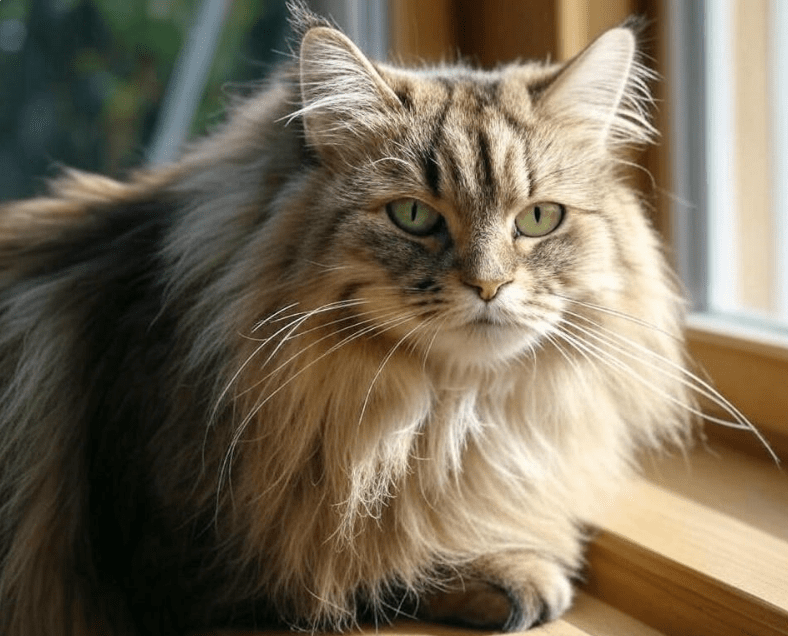
Maine Coon vocal chirps and trills are a delightful aspect of this beloved breed, reflecting their sociable, intelligent, and expressive nature. By understanding the reasons behind their vocalizations—ranging from their history and instincts to their desire for connection—you can better appreciate and respond to your cat’s unique “language.” Whether your Maine Coon is chirping to greet you, trilling for affection, or chattering at a bird, their sounds are a window into their world.
With the tips and insights in this guide, you’ll be well-equipped to interpret and engage with your Maine Coon’s vocalizations, strengthening your bond and ensuring their happiness. Embrace their chatty personality, and enjoy the lively conversations that make owning a Maine Coon such a rewarding experience.

